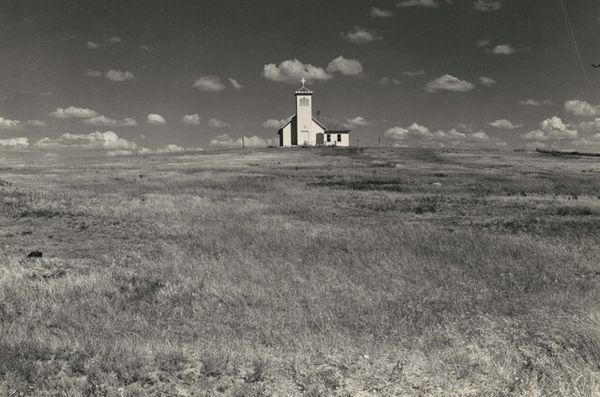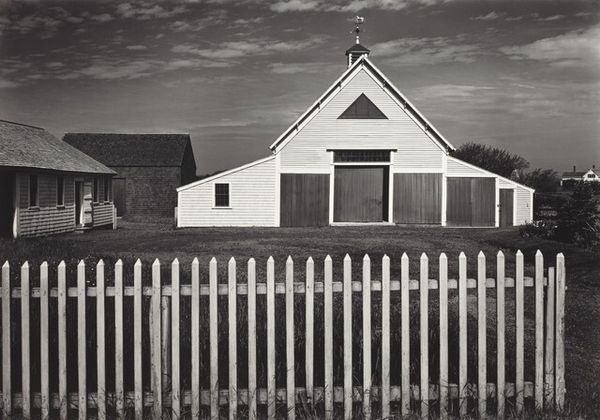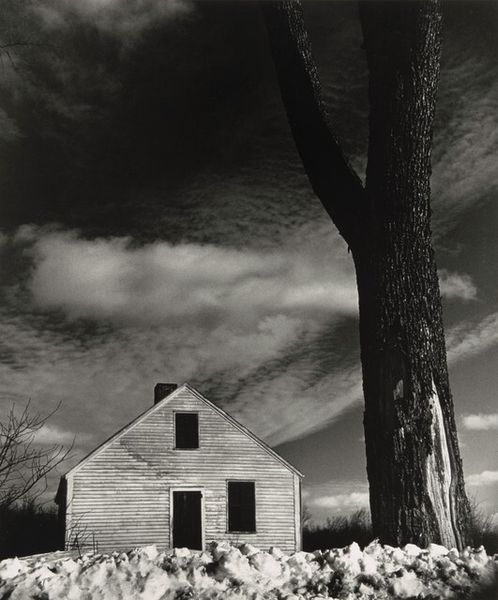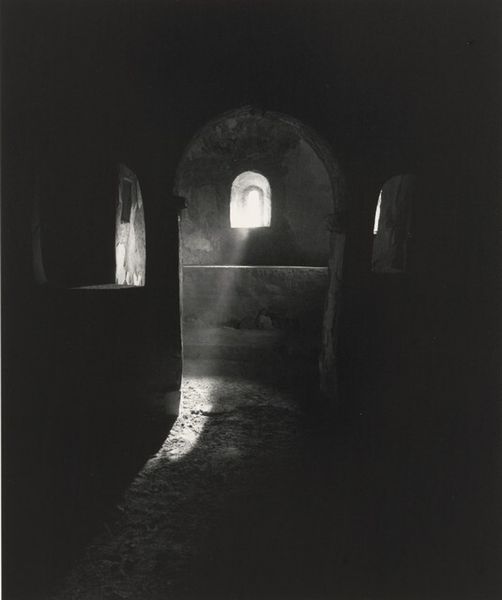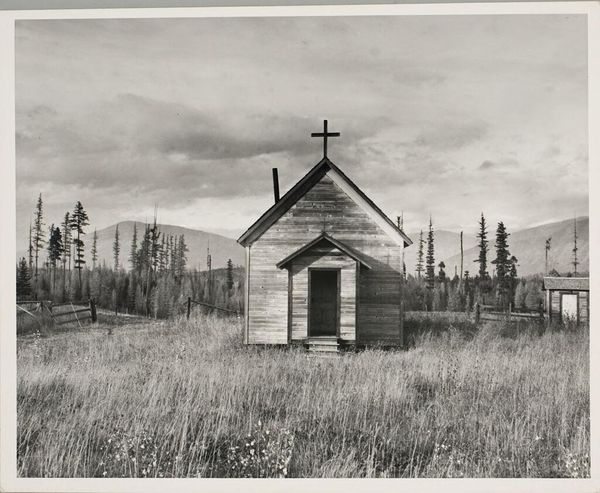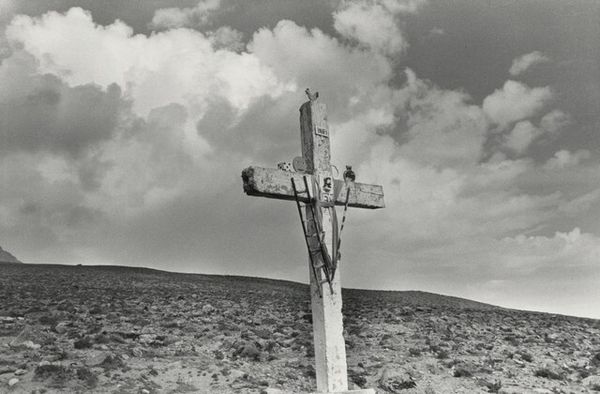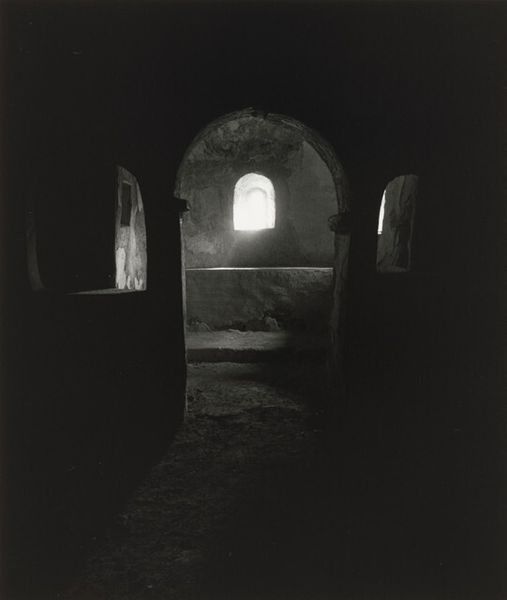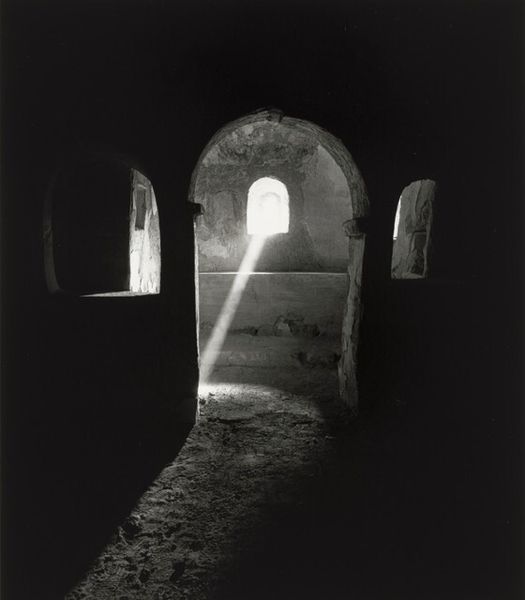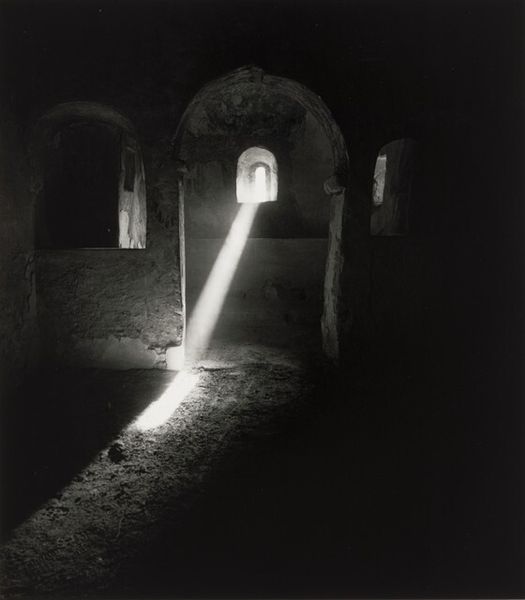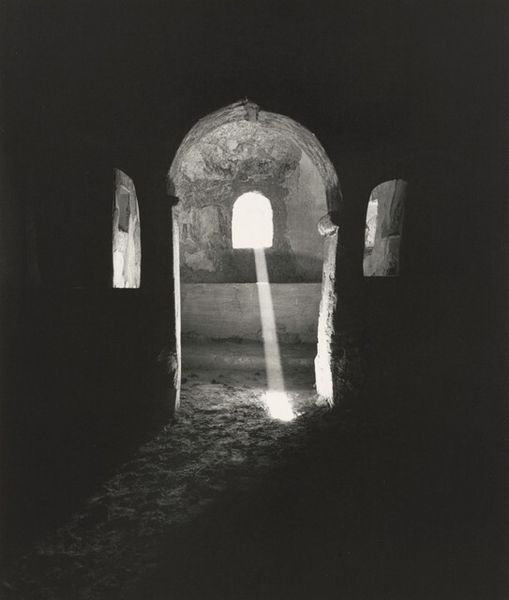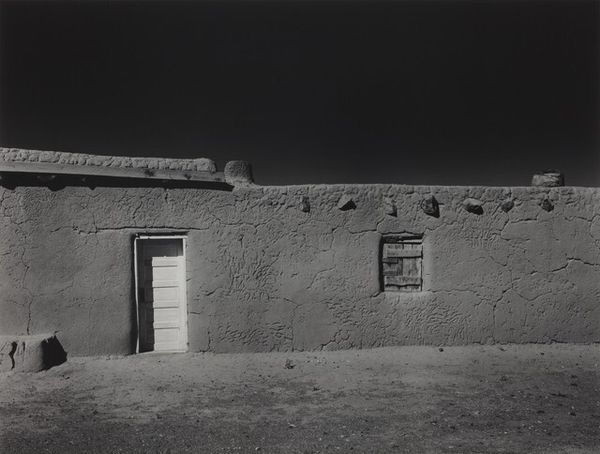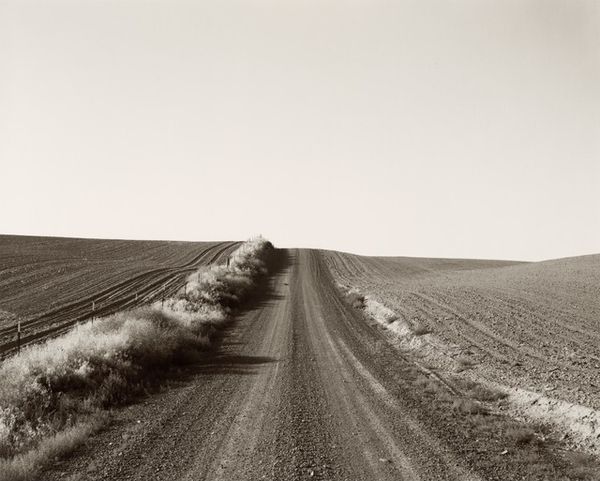
photography, site-specific, gelatin-silver-print
#
black and white photography
#
landscape
#
photography
#
site-specific
#
gelatin-silver-print
#
monochrome photography
#
monochrome
#
realism
#
monochrome
Dimensions: overall: 35.6 x 49.3 cm (14 x 19 7/16 in.)
Copyright: National Gallery of Art: CC0 1.0
Curator: Ansel Adams’ gelatin silver print, "Church and Road, Bodega, California," created sometime between 1953 and 1981, presents a striking and austere image. The tonal range, as expected, is captivating. Editor: The dirt road in the foreground almost swallows you whole. The looming church, small yet proud on the horizon, hints at an older social hierarchy – one where religious institutions held tangible, material sway. Curator: I think it's crucial to recognize how Adams, while celebrated, operated within certain power dynamics. The untouched landscapes he romanticized often disregarded the indigenous populations already inhabiting those spaces. This work, although seemingly about serenity, participates in the erasure of complicated histories. Editor: That tension is palpable. Consider the physical labor involved in maintaining a community like this back then. The road, that weathered church – they represent a daily grind, the grit and effort necessary for survival in a specific social and environmental context. You can practically feel the weight of the materials used to construct them. Curator: Absolutely. And who had access to the church? What societal norms were enforced within those walls? It’s imperative to think about the exclusions embedded in that idealized vision of community. Did the church act as a gatekeeper, or did it have true open arms in such rural towns, a concept easily interrogated? Editor: The act of photographing, selecting, and printing plays a vital role in understanding materiality. Silver gelatin wasn't a democratized means of image-making: consider who possessed that access and skill, then contrast it with the labor needed to build that physical church. We see stark disparities between creation methods that reflect class and status. Curator: So we're acknowledging that images are not neutral. They are constructed artifacts steeped in complex social and political narratives. This picture operates, then, as evidence ripe for dissection. Editor: Precisely. The value of the work, like the building it depicts, stems not just from form but the collective hands and systems behind them. Now it feels more complete to me; a convergence.
Comments
No comments
Be the first to comment and join the conversation on the ultimate creative platform.
